#I usually do a very smooth rendered style so doing a more texture heavy piece was really fun!
Text
So please pay attention, attention!
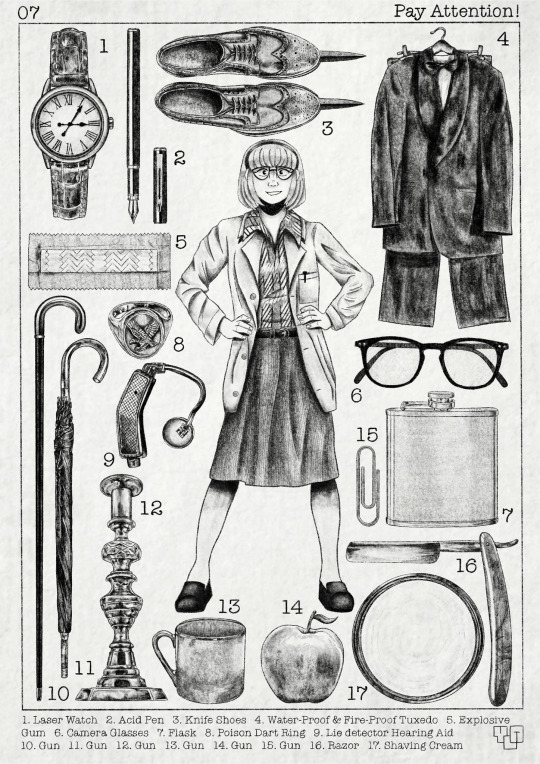
#Barb they could never make me hate you#please appreciate my wife guys#this is def my fav saf fanart Iv done so far#fun fact: this artwork was inspired by weapon posters!#I have a bunch up on my wall- hence where the idea came from#anyway I noticed a lack of Barb fanart and realised that the void needed to be filled#somebody’s gotta do it 😔 so it might as well be me 😔#I usually do a very smooth rendered style so doing a more texture heavy piece was really fun!#barb larvernor#spies are forever#spies are forever fanart#saf#saf fanart#tin can bros#tin can bros fanart#tin can brothers#tcb#tcb spies are forever#tcb fanart#fanart#my art
985 notes
·
View notes
Text
Exquisite Animations: Exploring the Exquisite Corpse in Animation
In this post, I’ll be taking a look at a few examples of an Exquisite Corpse in animation - and explore how the animators smoothly transition between each sequence.

The first example I’ll be looking at is the aptly-named ‘Exquisite Corpse’ from Toonami. It’s an animated collaboration project that celebrates the 20 years of the beloved programming block, which brought western audiences an awareness of a medium somewhat over looked, Japanese animation called anime. The project is just under three minutes long, a showcase of talented animators and a range of visual styles and techniques.
The sequence follows programming host TOM as he’s thrown into a lucid space adventure. The plot is rather loose, something arising from the various artists and aesthetics blending into one piece - there’s not an in-depth narrative because it’s a celebration of the block and animation as a craft. It’s about visual interest, flair and most importantly - movement.
It’s a bright, vivid electric animation showcase with dynamic motion, an energetic and exciting tempo and an unrelenting electric sonic score that underpins the entire project. There’s a variety in animation styles and aesthetic, with TOM being stretched from a 2D illustration to a claymation sculpture.
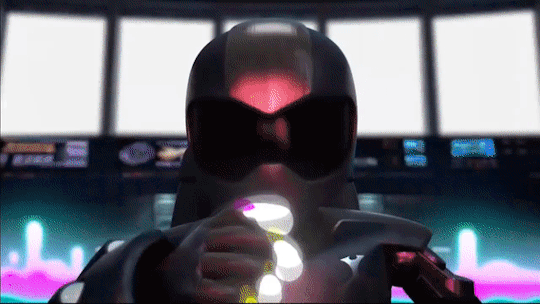
The motion is fluid, and inherently exciting due to the relentless pace and beat of the piece. There’s an electricity to the animation that’s a result of the continuously metamorphosing main character, and fluid backdrops. However, it is, at times, visually tiring and dizzying - Toonami’s Exquisite Corpse could be considered a visual overload - something which could actually put a few audience members off the project as a whole. There’s frequent flashes of light which serve as quick transitions into different styles, and an acid-inspired, ever-changing colour scheme that could dizzy some viewers.
I was suprised at how experimental some segments were, having textured lines and colours morph into abstract shapes and forms, before leaping into hand-rendered sketches of the robotic character. There’s a vast amount of visual styles and approaches that embody the ideas of an exquisite corpse nicely, and for the most part, the transitions are smooth and visually quite pleasing.
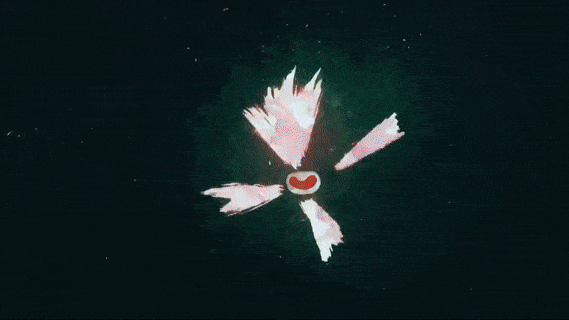
As I begin to move forward in my project, and experiment with different mediums and animation techniques, I want to be exploring how to blend each sequence together - into my own animated exquisite corpse. My analysis on each example here will be brief, as the main purpose of this research is to explore ways in which animators transition from each sequence - which ones are successful and how I can learn from these approaches.
Watching the animation on a much slower speed, I found that most of the transitions were achieved through flashes of light and dark, and having a subject grow so large in the frame that it’s a solid block of colour which then fades into the next sequence. The most important element of this example is speed - Toonami have created the illusion of fluid transition through not spending time or putting focus on it. I think this is the key to the success of the piece, that the transitions are almost an afterthought. Flashes to black, having the camera zoom or blur allows the next sequence to either flash onscreen or quickly fade in.
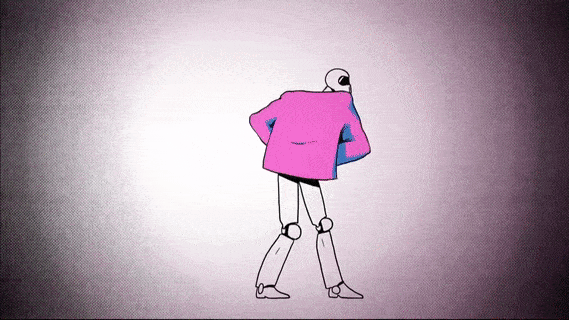
An idea that I want to explore a bit more in my research is my own criticism - I’m critical of my own work, and thus I should be discussing the successes and failures of the examples I’m looking at.
With Toonami’s example, there’s a lack of 3D integration that I think would add a richness to the animation. It’s a block celebrating anime - a primarily 2D art form - but I feel like experimenting with even more techniques would allow the piece to be more visually exciting and interesting to general audiences, not just fans of anime. There’s a limitation with just 2D animation, and we get glimpses of this with claymation shots - but these are ultimately submerged and overlooked by an extensive amount of digitally drawn 2D animated sequences.
It’s a visually exciting sequence with some rather simple approaches to transitions - but that simplicity allows the actual animations to shine instead of flashy transformations or transitional movements. It’s quick, minimal and simple - an approach I want to be exploring in my own responses.
Acting as a trailer for the hit animated series Rick and Morty, my next example, Exquisite Corpse is a fantastic collaboration of animation artists from around the world. On his blog, Creative Director Matt Taylor described the project as an ‘amazing puzzle to solve … a beautiful work of visual art.’
Honestly, I couldn’t agree more. It’s a brilliant piece of animation with an unbridled creativity and artists that clearly love their craft. The film starts with character Morty spilling one of Rick’s latest experiments, which begins our trip through the Rick and Morty multiverse, fit with dozens of creative animated sequences and soundtracked by an instrumental version of hip hop duo Run The Jewel’s ‘Thursday in the Danger Room’.

It’s an extremely successful and exciting animated piece, not only in getting fans to watch the new series - but also in attracting new ones. The show is renowned for it’s brilliant writing and sci-fi humour, not for it’s jaw-dropping animation. Trailers like this effectively celebrate the medium, and get people who would ordinarily overlook such a ‘crude science fiction cartoon’ to take another look at the show. The brilliant animation and experimental approach this trailer takes, like Toonami’s example, results in a praise and acclaim from a wide array of audiences, both fans and newcomers alike.
The animation boasts an impressive range of styles and endlessly imaganitive ideas towards transitioning between each new sequence. The movement is beautiful and exciting, fluid and dynamic as a whole whilst also allowing each individual sequence to have it’s own aesthetic and appeal. I would say this is more imaginative and exciting than the Toonami example, however there are still a few times where we simply flash to white and then the next sequence begins, or the transition animation doesn’t really blend with the next one. Ultimately, though, this is all rectified by the loose narrative the story has already established - Rick and Morty are effectively tripping on pure LSD in this sequence, so nothing really has to make sense - it’s a surreal, vivid and fantastic work of visual art.
We warp from a hand-drawn style, with an appealing chatter to a digital anime-like aesthetic, with exciting motion lines emphasising a dynamic sense of movement and action. Next, the viewer jumps into a very bizarre sequence, as a digitally drawn Rick and Morty are thrown into our world - an exciting motion capture animation, something I want to explore as a process. The blend of cartoon and real world is an idea that I think has lots of potential, from the subtle bobbing of the camera when Morty stands up to the accurate illusion of him sitting down on the park bench. The movement and interaction between the two worlds really works to create a believable sequence and harmonious blend of animation and reality. The wider range of animation styes and techniques allows the piece to feel more experimental, vast and rich in comparison to Toonami’s mostly 2D example.
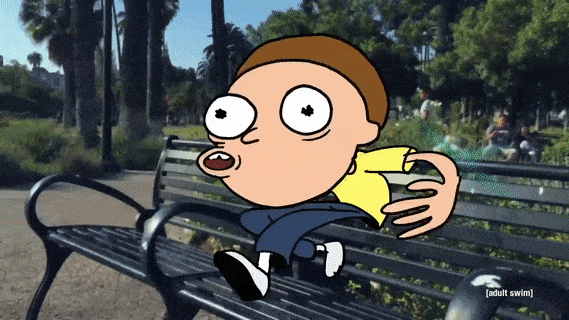
On a whole, the transitions between each sequence are much more creative and exciting than Toonami’s example, instead of blurs and zooms, we get warped transformations - with film frames shapeshifting into crisp comic panels, and then transforming into art pieces at a gallery. Each animator brings their own personal style to the table, from digital 2D to a cut out animation reminsciennt of Terry Gilliam’s surrealist works, but applied to a traditional acrylic painting.

Where Toonami’s example features an almost blink-and-you’ll-miss-it pace with a breakneck sonic soundscape, Rick and Morty’s Exquisite Corpse benefits from a slightly slower tempo and heavy, synthetic atmospheric beats allowing the sequences to run longer and breathe a little. These slightly longer sequences allow the audiences to appreciate and enjoy each animation more, I think, and allows each artist a much-needed breathing room. The range of techniques and styles also allows the animation to have a fluidity, not just in terms of aesthetic but also cinematography, with dynamic and spinning camera work that gives the animation an energetic quality and depth not usually seen in the show itself.
It’s a breath of fresh air compared to the standard flash-style animation of the show - a brilliant ‘collaborative cocktail’ of animation and imagination celebrating the endless possiblities of the medium.
Again, however, it seems like there’s a reluctance to explore stop motion or even digital 3D - like Toonami, the piece puts a heavy focus on 2D animation. I would say it does take more risks in this area than Toonami, but the sequence could be even more experimental and rich with techniques and visual language had the creators explored a more varied style. This would create a more difficult challenge for the animators, but I think it’s definitely something that would improve the success of the animation as a whole.
I think some of the most important ideas and principles to take from looking at this are the way the sequence quickly sets up a logical narrative reasoning for the lucid visuals, and the creative and endlessly imaginative approaches animators took when seamlessly transitioning from the previous artist’s sequence to their own.
Also, the blend of animation and our real world is an idea that I’ve mentioned already on the blog - but it’s something that I do find really interesting and marks an exciting challenge for me as an artist. As a process and technique, it’s something that I’d like to explore in the coming weeks.
The stop motion sequence transitions to the next, a 2D animated example, through a swirling of colour - the next sequence spirals onto the screen. These two examples, Rick and Morty and Toonami, represent one potential approach to an animated exquisite corpse - creating individual animated sequences with their own backdrops and transitioning from there. As I’m about to explore with Mugen’s Walk Cycle, however, this is just one of many. I think transitioning from entire sequences to just an animated character is somewhat easier - when you animate just the character, you’ve got to physically transform that character into the next one - a difficult task considering stop motion puppets into flat 2D illustrations. The final example I’m looking at, Mugen’s Walk Cycle, is a more stripped down, simplistic approach to this type of animation - something that relates to my own project quite nicely.
Based in London, freelance animator and visual artist Oscar Barany worked on the character animation and design of a music project titled Mugen, a Leeds based collective exploring the fictional character of the same name. Mugen is the animated character persona of indie musician Harry Kinchington, who produces all the music for the project. Barany has made several animated music videos and illustrations for the project, but it’s the vivid flashing walk of It Never Ends that I’ll be discussing here.

It Never Ends. (2017). Oscar Barany. Mugen.
Essentially a one-man animated exquisite corpse, it’s a looping walk cycle animation of Mugen, flashing between different character designs with every frame. These character designs, like Rick and Morty’s transitions, are endlessly imaginative, with the character shifting from an abstract set of geometric shapes or lines to a fez-wearing blue genie. The richness of the animation arises through these extremely engaging and creative character designs, instead of an experimental animation showcase. A vastly different approach to the previous two, this animation represents an interesting alternative to the fluid examples I’ve discussed already. The simplistic edge to the work results in a fun, engaging and naive animation with Oscar’s rather intuitive process and signature ‘jiggly monster’ aesthetic.
What Barany seems to have done here is create a digital frame by frame walk cycle with an outline template, and then created a new character design for each frame of animation. He’s an artist who loves working within Photoshop, so it’s likely he’s done the same here. The animation itself is deceptively simple in comparison to the other examples, but it’s Barany’s countless exciting and dynamic character designs that flash onscreen that makes the sequence so successful, fun to watch and weirdly addicting. The designs flash on and off screen so fast that it demands you pause and examine every frame, taking in each imaginative and bizarre illustration.
Although not strictly an ‘exquisite corpse’, I felt this example provided an interesting counterplay to the other examples I’ve discussed. As there’s no incredibly experimental or lucid, fluid movement, the animation puts the audience’s focus on the action at hand. In this case, it’s a character walking. This idea of a theme, and running idea between each sequence could be considered to be lost in Rick and Morty’s example, as there’s no real theme to the animation other than some surreal acid-soaked visuals. The same is true with Toonami’s Exquisite Corpse, which has no thematic idea or concept other than a space adventure. Barany’s example, however, has a clear concept and runs with it - there’s a theme that allows the animation to be somewhat restricted in comparison to the dimension-hopping antics of Rick and Morty.
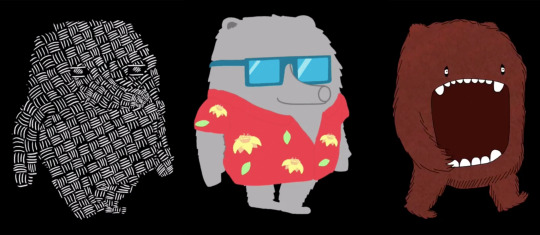
Although the piece doesn’t explore alternate mediums, such as stop motion or vastly different aesthetics, I think the sequence benefits from that simplicity and creative limitation. It’s a simple animated piece which speaks for itself through an exciting handful of imaginative and visually exciting character designs and a lively guitar soundtrack, with spacey and nuanced vocals that give the sequence a very atmospheric loose and wierdly nostalgic vibe.
An exquisite corpse is defined as a creative method in which a collection of works or images are collectively assembled, normally around an idea or theme. With that definition, I would say Barany’s walk cycle here fits the bill - through the shifting character design variations which have no real connection to the previous ones. It’s an animation that sings creativity and fun, with an appealing naivety that gives the work a simplistic charm.
I would discuss how Oscar decided to transition between each sequence, but here there’s no need for one. The electricity and fun quality of the animation arises from the flashing on and off screen of exciting, interesting character design variations on Mugen. There are no transitions, just simply flashes which really work in the animation’s favour, enhancing the piece’s naive appeal and again, finding a charm in simplicity.
I think if I were to simply stick to a flat 2D process, as this example does, this is something that I would want to use in creating a final piece. However, I want to explore stop motion animation in addition to 2D, so this template technique wouldn’t really work in the same way. Despite this, I will be exploring the process as a practical response to this research and as an experiment, looking at a different approach to creating an Exquisite Corpse-style animation which ditches the surrealist approach to narrative for a frankenstein’s monster of character designs and showcase of more traditional animation.
In this post, I’ve discussed a few different examples of an ‘exquisite corpse’ in my chosen specialist area of graphic arts, animation. These animations provide interesting approaches to the parlour game, both collectively assembled and a strictly solo project. I’ve been able to explore how these examples approach transitioning between animated sequences, and looked at an alternative approach that’s less surreal and absurd in it’s imagery in favour of a more linear animation. All of these examples are successful, but they could all benefit from a wider exploration of techniques and mediums, I think.
As I shift focus into experimenting with different animation techniques and processes, I’ll be beginning to consider how I can collate these sequences into a singular piece, and I’ll be taking the ideas discussed here and exploring these in how to transition from each animation. Moving forward, I want to explore Barany’s minimal approach through the digital template technique, designing a character and sketching out bizarre variations before jumping to the animation process. I’m planning on contacting the artist, and asking him to talk about his process as a way to gather my own primary artist research.
My direct next task will be to complete a mid-project review, reflecting on my progress so far in my FMP, looking at the skills I’ve learnt, difficulties encountered and an overall review of my work so far.
Actions
Write a Mid-Project Review, reflecting on my progress and tutor assessment
Produce a flashing walk cycle, inspired by Oscar Barany’s Mugen example
New References
Exquisite Corpse. (2017). Alex Tysowsky
It Never Ends. (2017). Oscar Barany. Mugen.
Exquisite Corpse. (2017). Matt Taylor.
0 notes